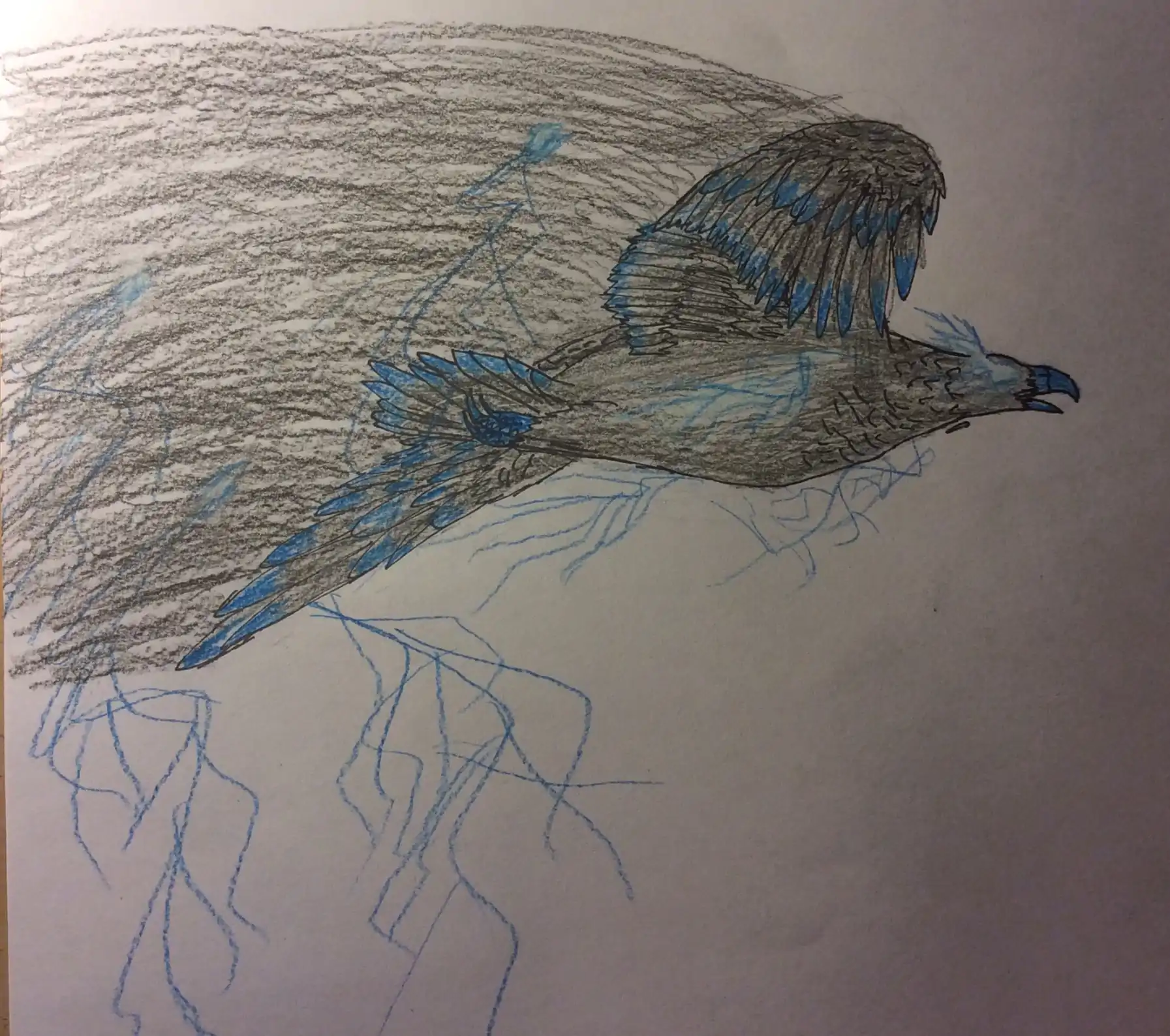Thunderbird (5e Creature)
Thunderbird
|
Gargantuan monstrosity, neutral Armor Class 15 (natural armor)
Saving Throws Dex +7, Con +12, Wis +8, Cha +6 Confer Lightning Resistance. The thunderbird can grant resistance to lightning damage to anyone riding it. Illumination. The thunderbird sheds bright light in a 60-foot radius and dim light for an additional 60 feet. Innate Spellcasting. The thunderbird’s innate spellcasting ability is Wisdom (spell save DC 18). The thunderbird can innately cast the following spells, requiring no material components: At will: feather fall, fog cloud, gust of wind, thunderwave Keen Sight. The thunderbird has advantage on Wisdom (Perception) checks that rely on sight. Legendary Resistance (3/Day). If the thunderbird fails a saving throw, it can choose to succeed instead. Storm Aura. A creature that touches the thunderbird or hits it with a melee attack while within 5 feet of it takes 11 (2d10) lightning damage. The thunderbird can choose for its rider to not suffer this effect. ACTIONSMultiattack. The thunderbird makes two attacks: one with its beak and one with its talons. Beak. Melee Weapon Attack: +14 to hit, reach 10 ft., one target. Hit: 27 (4d8 + 9) piercing damage plus 11 (2d10) lightning damage. Talons. Melee Weapon Attack: +14 to hit, reach 5 ft., one target. Hit: 23 (4d6 + 9) slashing damage plus 5 (1d10) lightning damage, and the target is grappled (escape DC 19). Until this grapple ends, the target is restrained, and the thunderbird can't use its talons on another target. Lightning Strike (Recharge 5-6). The thunderbird hurls a magical lightning bolt at a point it can see within 500 feet of it. Each creature within 10 feet of that point must make a DC 20 Dexterity saving throw, taking 66 (12d10) lightning damage on a failed save, or half as much damage on a successful one. Lightning Dash. The thunderbird can transform into a bolt of lightning. It then can use its movement up to its flying speed. If this movement triggers an opportunity attack, the attack is made at disadvantage. The thunderbird cannot use this ability again until it has finished a long/short rest. LEGENDARY ACTIONSThe thunderbird can take 3 legendary actions, choosing from the options below. Only one legendary action option can be used at a time and only at the end of another creature's turn. The thunderbird regains spent legendary actions at the start of its turn. Talons Attack. The thunderbird makes one talons attack. |
Many fear rocs for their great size, and rightfully so. However, to say that they are the greatest birds of all is far from true: there is a creature imbued with power undeniably far beyond them. They are lightning, they bring rain where they fly, the wind is their blood, storms are their creation, and their wings are thunder. For those privileged enough to bear witness to them, the breath is stolen from their lungs as they view the flight of the thunderbird. Bringers of the Rains. Thunderbirds are, in many respects, very similar to rocs: both are similar in size, appear as massive birds of prey, rest on mountain peaks, and have a taste for large animals. That is where the comparison ends, as thunderbirds are more powerful than any roc, which can be seen at even a passing glance. Their bodies are surrounded by an intercut dance of electricity and their eyes are crackling balls of lightning. When in flight, a thunderbird is surrounded by great, black thunderstorm that signals they’re near. They also wield a wide assortment of elemental magics, such as launching arcs of lightning, controlling weather patterns, and briefly transforming into bolts of lightning. Kings of the Skies. Thunderbirds dominant the skies of almost any area they lair. They prey upon only the largest of creatures mostly, like elephants and giants, but deer will do when nothing else is available. The storm that surrounds the bird when it takes flight helps to disguise it from prey most of the time, though anything of humanoid level intelligence will usually take notice if a storm cloud suddenly changes direction without any wind. A Thunderbird’s LairThunderbirds dwell on mighty mountain peaks, whose points caress the sky. Here they make their nests, the only place can reside in relative peace. Here they look upon the world without inviting unwanted attention and rest in effective harmony. Lair Actions
Regional Effects
If the thunderbird dies, the effects fade over 1d10 days. | ||||||||||||||||||||
Back to Main Page → 5e Homebrew → 5e Creatures
